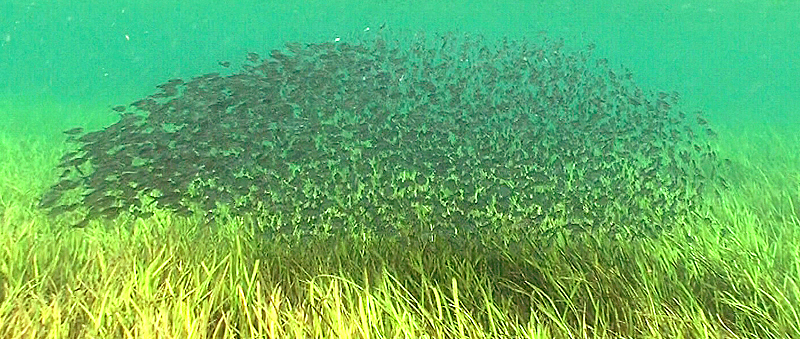Catching Big Bass in the Fall

As fall sets in bass begin transitioning from their deeper summer waters to shallower areas, feeding aggressively to prepare for the colder months. This period offers a prime opportunity to catch some of the largest bass of the year. In fall, targeting these giant bass requires the right techniques and an understanding of their feeding behavior. Below are three key strategies that anglers can use to maximize their chances of success during the fall fishing season.
During fall, bass are on the move, migrating from their deep summer hangouts to shallow waters where baitfish are more abundant. The key to finding giant bass is to focus on transition zones—areas where bass move between deeper and shallower waters. These zones often include creek channels, points, and drop-offs, where bass ambush prey as they migrate. Bass use these transitional areas as feeding stations. Points and creek channels act as natural highways for bass following baitfish, making them ideal spots to intercept feeding bass. Drop-offs also provide cover for bass to hide and strike unsuspecting prey. Use your fishfinder to locate these transitional structures and focus your fishing efforts there. Cast crankbaits, spinnerbaits, or jerkbaits along the edges of these structures to entice strikes from bass moving through the area.
In the fall, bass are targeting bigger prey such as larger shad, bluegill, and crawfish. This is the time to break out your larger lures, which mimic the size and profile of these bigger meals. Larger swimbaits, crankbaits, or topwater lures can be especially effective for catching giant bass during this time of year. Bass are opportunistic feeders, and in the fall, they are looking to consume larger prey to build up fat reserves for the winter. Bigger lures stand out and are more likely to attract larger, more aggressive bass. Cast large swimbaits, bigger Banjo Minnows or crankbaits in areas where bass are actively feeding, especially around points, docks, and submerged vegetation. The bigger profile of these baits will mimic the larger forage the bass are chasing, increasing your chances of catching a giant.
Throughout the fall, bass are focused on baitfish, particularly schools of shad, herring, or other small fish species. Using lures that imitate baitfish, such as jerkbaits, spinnerbaits, and crankbaits, is essential to matching what bass are targeting. The more realistic the presentation, the more likely you are to draw a strike. Bass are following baitfish during their fall migration, and using lures that closely resemble these prey items will provoke reaction strikes. Baitfish imitations that create flash and vibration are particularly effective in stained or murky water. Use jerkbaits in clear water for a lifelike, erratic action that mimics fleeing baitfish. Spinnerbaits work well in murkier water where the flash of the blades imitates a school of shad or minnows. Crankbaits can be used to target bass at different depths depending on where baitfish are located.
Fall is a crucial time for anglers targeting big bass, as the fish are feeding aggressively and moving through transitional areas in search of food. By focusing on these key strategies—targeting transition zones, using larger baits, and imitating baitfish—you can increase your chances of landing a giant bass this season.




